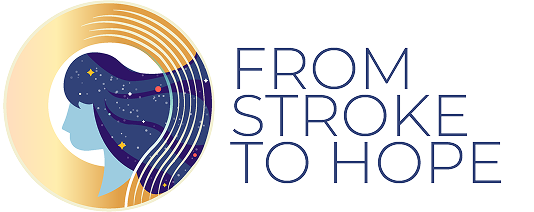Returning to work after a stroke can be both exciting and overwhelming. For many stroke survivors, getting back to work represents a sense of purpose, financial stability, and independence. However, it also comes with physical, cognitive, and emotional challenges that can make the transition difficult.
Some stroke survivors are able to return to their previous job, while others may need accommodations, a different role, or a remote work option. Unfortunately, some survivors may find that they are no longer able to work at all. In these cases, Social Security Disability Insurance (SSDI) or Supplemental Security Income (SSI) may be necessary to provide financial support.
This blog will cover:
✔ Challenges stroke survivors face when returning to work
✔ Strategies for re-entering the workforce successfully
✔ Work-from-home vs. in-person work considerations
✔ What to do if you can no longer work (SSDI, SSI, Medicaid options)
✔ How to apply for disability benefits and what to expect
Challenges Stroke Survivors Face When Returning to Work
Many stroke survivors want to return to work but face obstacles, including:
🔹 Physical Challenges: Weakness on one side, difficulty standing or walking, and fatigue can make certain jobs hard to perform.
🔹 Cognitive Impairments: Memory issues, slower processing speed, difficulty multitasking, or brain fog can affect work performance.
🔹 Speech & Communication Barriers: Some survivors struggle with aphasia, making it hard to communicate with colleagues or customers.
🔹 Emotional & Mental Health Challenges: Anxiety, depression, and stress are common after a stroke and can affect confidence and productivity.
🔹 Energy & Stamina Limitations: Many survivors experience post-stroke fatigue, which can make working a full shift difficult.
The good news? There are strategies to overcome these challenges and find a path forward.
Strategies for Returning to Work After a Stroke
If you want to return to work, gradual reintegration and accommodations can help.
1. Have an Open Conversation with Your Employer
If you worked before your stroke, discuss your options with your boss.
✔ Ask about modified duties – Your employer may allow you to work in a different role that fits your abilities.
✔ Request a trial period – Some companies allow employees to return on a trial basis to see if they can meet job expectations.
✔ Discuss accommodations – Employers are required to provide reasonable accommodations under the Americans with Disabilities Act (ADA).
🔹 Examples of Workplace Accommodations:
✔ A modified work schedule (part-time or shorter shifts)
✔ Assistive technology (speech-to-text software, ergonomic chairs)
✔ Remote work or hybrid options
✔ Extra breaks for fatigue management
📝 Tip: If you feel nervous about asking for accommodations, bring a doctor’s note or recommendations from a therapist to support your request.
2. Consider Work-from-Home Options
Many stroke survivors find that working remotely is a better option than returning to a job site.
✔ Less physical strain – No need to commute or navigate a workplace.
✔ Flexible schedules – You can take breaks when needed.
✔ Fewer distractions – Some survivors work better in a quiet home environment.
🔹 Best Work-from-Home Jobs for Stroke Survivors:
✔ Remote customer service or chat support
✔ Freelance writing or content creation
✔ Virtual administrative or data entry work
✔ Online tutoring or teaching
✔ Graphic design, digital marketing, or IT-related jobs
📝 Tip: If your company doesn’t offer remote work, you can explore new job opportunities on remote job boards like FlexJobs, Upwork, or Indeed.
3. Start with Part-Time or Volunteer Work
If you’re unsure whether you’re ready for a full-time job, ease back into working with:
✔ Part-time jobs – Allows you to test your stamina and work abilities.
✔ Freelance or contract work – Gives you flexibility in scheduling.
✔ Volunteer work – Helps rebuild confidence and skills without job pressure.
This gradual approach can help you build endurance while adjusting to work life again.
What If You Can No Longer Work? Applying for Disability Benefits (SSDI & SSI)
If your stroke has left you unable to perform even simple job duties, you may qualify for Social Security Disability benefits (SSDI or SSI).
1. Difference Between SSDI and SSI
✔ SSDI (Social Security Disability Insurance): For people who have worked and paid Social Security taxes.
✔ SSI (Supplemental Security Income): For individuals with little to no income who haven’t worked enough to qualify for SSDI.
Both programs require you to prove that your disability prevents you from working.
2. How to Apply for SSDI or SSI
📝 Step 1: Gather Your Medical Records
✔ Stroke diagnosis documentation
✔ Neurologist & rehabilitation reports
✔ Proof of physical, cognitive, or speech impairments
✔ Statements from doctors, therapists, and caregivers
📝 Step 2: Complete the Application
✔ Apply online at www.ssa.gov
✔ Call 1-800-772-1213 to apply over the phone
✔ Visit a local Social Security office
📝 Step 3: Expect a Waiting Period
✔ It can take 3-6 months to receive a decision.
✔ If denied, appeal the decision and provide additional medical evidence.
3. Health Insurance Options After Leaving Work
If you lose your job, you may also lose your health insurance. These programs can help:
✔ Medicare – If approved for SSDI, you’ll qualify for Medicare after 24 months.
✔ Medicaid – If you have low income, you may qualify for Medicaid immediately.
✔ COBRA Insurance – Allows you to keep your employer’s health insurance for up to 18 months (but can be expensive).
✔ Affordable Care Act (ACA) Marketplace Plans – Government-subsidized health insurance based on income.
📝 Tip: If you need immediate coverage, apply for Medicaid through your state’s health department.
Final Thoughts: Finding the Best Path Forward
Returning to work after a stroke is a personal decision based on your abilities, recovery progress, and financial needs.
✔ If possible, try returning to work with accommodations or a remote job.
✔ If work is no longer an option, SSDI or SSI can provide financial support.
✔ Explore health insurance programs like Medicaid to ensure you stay covered.
💙 You are not alone in this journey. Whether you’re going back to work or seeking disability benefits, there are resources and support systems available to help you.
👉 Have you tried re-entering the workforce after a stroke? Share your experience and tips in the comments!

